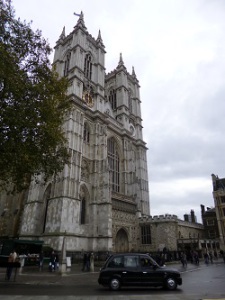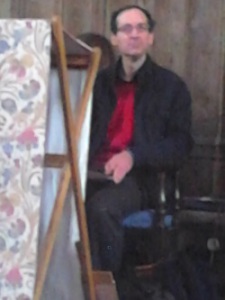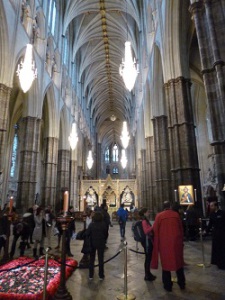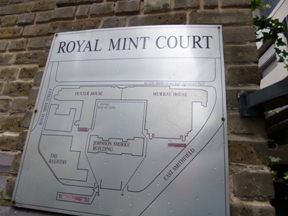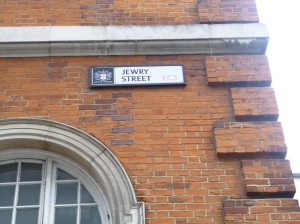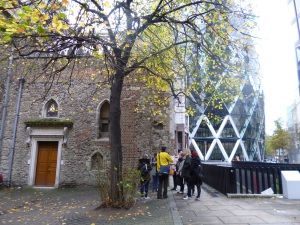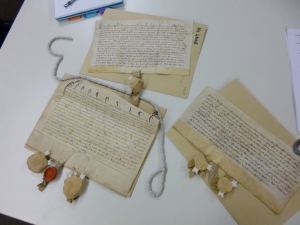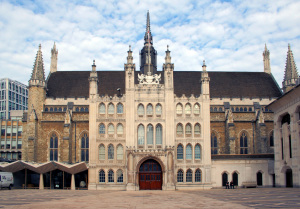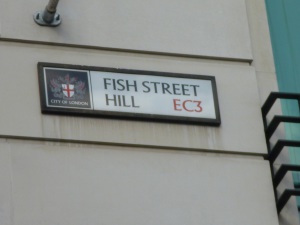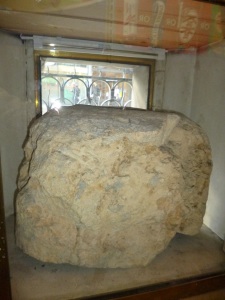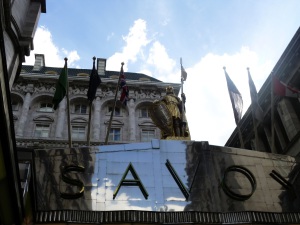The final excursion of the year took us outside of London’s walls and into the city proper, where we considered how London both expelled and embraced the people, professions and communities situated on the south bank of the Thames, and in particular studied the relationship between the Church and the more debauched citizens who made their residences there.
During our study of Medieval and early modern London Southwark has always been the area in which professions frowned upon were banished to in order to not sully the morality of the men and women who lived within the city walls. Being situated just opposite the city made it an ideal place to found businesses that were all considered taboo: tanner’s shops, brothels, taverns and at a later date, playhouses. We focused our study on a few of these and considered how they affected the city itself.
 Taverns in terms of prestige were an establishment that was often middling on the social scale, enabling them to cater for the well-off or rich merchants of London. They were vital places for common people to meet, and were often very effective ways to disseminate information to a predominantly illiterate society. They were also ways in which the common people could spread ideas, which often worried the elite and upper classes who were unused to the beginnings of self-awareness shown in cases such as the Great Revolt of 1381.
Taverns in terms of prestige were an establishment that was often middling on the social scale, enabling them to cater for the well-off or rich merchants of London. They were vital places for common people to meet, and were often very effective ways to disseminate information to a predominantly illiterate society. They were also ways in which the common people could spread ideas, which often worried the elite and upper classes who were unused to the beginnings of self-awareness shown in cases such as the Great Revolt of 1381.
Taverns and brothels were often very similar establishments and the two weren’t entirely separate; they often doubled as both in order to attract a wider variety of clientele. As

prostitution wasn’t allowed in the City of London itself Southwark became the next best area to establish the business. In general the profession was frowned upon but was largely considered a necessary vice in order to prevent sins considered worse from happening – such as sodomy. This gave the men of London access to prostitutes they would otherwise have been unable to procure, and they often traveled across the Thames to frequent the brothels.
Interestingly, despite being so thoroughly damned by the Catholic Church many of the brothels in Southwark were owned by the Bishop of Winchester.

Though prostitutes were effectively ostracized from the community by the church it was interesting to see how the ecclesiastical world collided with the material, baronial world as religious leaders who held lands would often grow rich from collecting rent from the very establishments they condemned.

A final, very interesting item of study were the playhouses established in Southwark, particularly the Globe theater. Opened in 1599 it saw the meteoric rise in popularity that theater gained and profited from it, despite the initial suspicion that the clergy and the nobility had for plays that could potentially form a social critique on the society in which they ruled. The success of playhouses, though partly due to the patronage of monarchs like Elizabeth I and James I, were the small amount needed to pay to witness a play. This meant that all strata of society rubbed shoulders and could comment on the questions that the play raised. As one of the few areas where the common man could interact with the upper classes playhouses were novel areas where the traditional boundaries in Medieval society were blurred.
